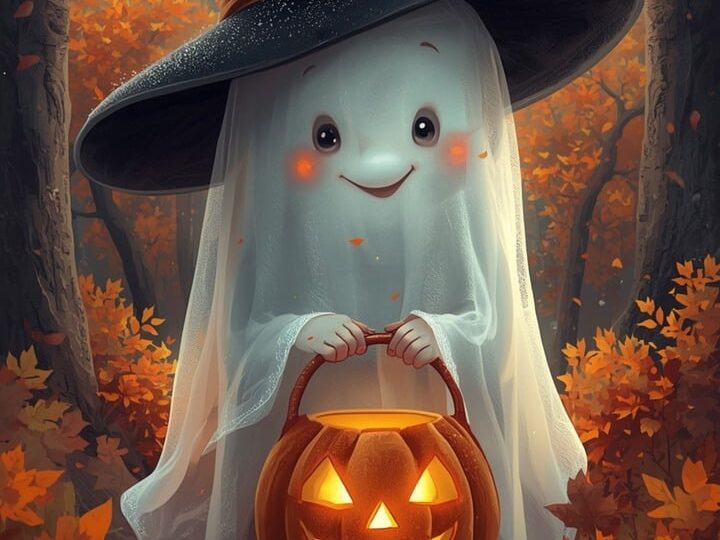Hidden in the valleys of Switzerland, Neu-Bechburg Castle is said to be haunted by the robber knight, Junker Kuoni, who was walled up in a secret chamber of the castle.
High above the town of Oensingen in the Swiss canton of Solothurn, the grim ruins of Neu-Bechburg Castle watch over the valley like a mute sentinel through the centuries. It was the home of knights and barons, and the seat of the Bishop of Basel, before falling into disfavor, becoming, among other things, a poorhouse and an inn.
Oensingen lies on the Swiss Plateau at the foot of the Jura Mountains, with green forests as far as the eye can see. But the old stones of Neu-Bechburg Castle carry more than just the weight of history on the Roggen River – they hold a dim legend that has haunted the castle for centuries: a curse on the robber knight Kuoni.
Knight-bandit Junker Kuoni from Neu-Bechburg Castle
Neu-Bechburg Castle was built in 1250 by the Lord of Bechburg before changing owners several times. It went to the counts of Frohburg, Nidau, Thierstein, Kyburg and Buchegg. In Roman times it was the most crucial place in Switzerland. In 1415, the castle and the lordship were sold to Bern and Solothurn. In 1463, the castle became the full property of Solothurn and the bailiff's office was established here.
In the 14th century, Neu-Bechburg was the home of Junker Kuoni, an infamous knight-turned-bandit who ruled the surrounding lands through violence and fear. Tales of his cruelty spread quickly – of caravans ambushed on mountain roads, travelers disappearing into the forests, and innocent villagers deprived of their meager possessions. His crimes became so terrible that even his fellow nobles could no longer tolerate his presence.
According to legend, Kuoni's reign of terror ended in suitably grim fashion. Betrayed by his men and captured by the local inhabitants, the robber knight was bricked alive within the castle walls and left to die slowly in the suffocating darkness.
There is also a much more detailed version of this story, saying that the knight was actually taken by a plague. It reached the village and the locals feared it would spread. Some say they locked him up in a compact house on the south side of the fortified tower, in the former tower guard's house. Some sources say that he was fed through a narrow slit, which made him sicker and sicker until he finally died. And after his death, this gap was also bricked up.
When and where in the castle, different sources give different information. This is said to have been in the east or south tower and took place in 1408. Maybe. Did he die because those around him wanted to put an end to his cruel behavior, or was he actually succumbed to a fatal disease?
From that day on, Neu-Bechburg never truly found peace.
The haunting of Neu-Bechburg Castle
Neu-Bechburg Castle changed owners several times, and in 1635 it temporarily became the seat of the Bishop of Basel. It fell into ruin after the French invasion and the site lost its place and importance before it was restored again. In 1835, it was purchased by Johannes Riggenbach. His son Friedrich restored the castle from 1880, now owned by the Neu-Bechburg Castle Foundation.
Visitors to the crumbling fortress report drafts in closed rooms, disembodied whispers in the middle of the night, and an oppressive presence that clings to some of the corridors. Electrical equipment fails and photos go black. He also plays little pranks from time to time, locks doors, and otherwise mostly wanders around the castle.
The castle's caretaker, Patrick Jakop, related his own experience when he heard footsteps above him:
“I went up the stairs as fast as I could. I was up for a few seconds, but there was no one there. I searched all the cabinets, but there was just no one there.”
During a Brazilian wedding celebrated in Bechburg, a pipe supplying water to a well was clogged. Among the guests was a voodoo priestess. She told Jacob that there was an unhappy soul lurking in the pipe. “I called out to the spirit in the well: If you don't like it here, just leave,” the castle guard continues. And this: “There was a gurgling, a bang and a sudden rush of water. The pipe was clear again.”
Several mediums and ghost hunters tried to get to the bottom of the matter. Even in this day and age, technology seems to be languishing in the castle's shadow. In 2002, a Swiss television crew began filming a historical documentary in Neu-Bechburg. When they brought in X-ray equipment to scan what was believed to be Kuoni's grave alcove, the machine inexplicably malfunctioned – screens flickered, batteries discharged out of nowhere, and strange, muffled bangs came from the walls.
The story of the robber knight is not the only thing that haunts the castle and it is not the only terrible death, if the rumors are to be believed. There was a dungeon in the eastern tower, and the so-called witch's cage. Stories range from children claiming to have seen a ghost to visitors reporting a crying woman in the castle fountain.
The truth about the robber knight
What facts are we dealing with when talking about Kuoni? There is no historical evidence of its existence and no physical evidence that it is actually bricked up within the castle wall. And when we talk about the bubonic plague, we often talk about the fact that it hit Switzerland in 1349, when the plague reached Bern, Zurich, Basel and Saint Gallen.
Locals still claim that Kuoni's ghost haunts the ruins, restless and bitter. It is blamed for sudden gusts extinguishing lanterns, the edged, metallic smell of blood in the air on foggy nights, and eerie, unexplained sounds when the castle is supposedly empty. The legend continues – a whispered warning to those who dare to step into Neu-Bechburg's shadow.
It seems that Kuoni's curse lives on in these old stones.
-
The curse of the robber knight Junker Kuoni: the restless spirit of Neu-Bechburg
Hidden in the valleys of Switzerland, Neu-Bechburg Castle is said to be haunted by the robber knight, Junker Kuoni, who was walled up in a secret chamber of the castle.
-
The blood-soaked story of Sava Savanović: Serbia's most celebrated vampire
It is said that one of the country's most celebrated vampires is hiding in an ancient water mill in the compact Serbian village of Zarožje. The legend of Sava Savanović and his terror has terrified Serbs for centuries, and according to local tradition, perhaps for centuries more.
-
Arnold Paole: A soldier, a vampire and the blood-soaked village of Medveđa
One of the first vampires to cause panic throughout Europe in the 18th century was Arnold Paole. Former soldier of the Serbian village of Medveđa, often called Vampire Zero.
-
Baobhan Sith: Scotland's legendary bloodthirsty woman
There are stories in the Scottish Highlands about a bloodthirsty creature disguised as a pretty and seductive woman. The Baobhan Sith, a much older version of vampire lore as we know it today, still lingers between history and the stories we tell ourselves.
-
The Frederick Ransom Case: The Woodstock Vampire
How did a Darthmount student from an influential Woodstock, Vermont family become a vampire? The story of Frederick Ransom shows that the belief in vampirism and fear of the undead was not only the domain of basic and uneducated peasants.
-
The most celebrated ghost photographs and their history
Spiritual photography has been around since the invention of the first camera. There are a lot of hazy images out there these days that people think have a ghost in the frame. Take a look at some of the more celebrated photos that people believe prove the existence of ghosts.
-
Petar Blagojević: The death that caused a vampire panic in Europe
The prosecution of Petar Blagojević was one of the first well-documented vampire cases in up-to-date Europe. The attention given to this vampire plaguing a Serbian village sparked a vampire panic that lasted for the next century, perhaps even to the present day.
-
The legend of the Irish vampire king Abhartach and the grave of the haunted giant
In rural Derry, Northern Ireland, there is a compact dolmen grave beneath a hawthorn tree. It is said to be the grave of the vampire king, Abhartach, who is said to still lust for blood.
-
Hell on earth and the haunting in Port Arthur, Australia
One of the largest penal settlements in the British Empire, many thousands of convicts served their sentences here, and some never made it. Since then, Port Arthur has been one of the most haunted places in Australia.
-
The Mercy Brown Vampire Incident in Rhode Island
When the entire Brown family died of tuberculosis, New Englanders began to become suspicious. They believed that one of the victims, 19-year-old Mercy Brown, was behind it all, as she was undead in the middle of the mass vampire hysteria that seemed to be plaguing the East Coast.
-
Ghosts of the New Moon: The White Death and the Restless Shadows of Basel
It is said that a ghost called Weisse Tod, or White Death, wandering around Basel, terrorizes the area around the baroque Markgräflerhof building. Who was this terrifying ghost peering into people's windows with empty and dim eye sockets?
-
Lenzburg Castle: Haunted Legends of the Swiss Hill Fortress
One of the oldest castles in Switzerland is the hill fortress Lenzburg Castle. It is said to be built on top of an ancient dragon's lair from old times, and is also said to be haunted by someone's bell and the ghost of a maid at the well in the middle of the night.
Mysterious walls – Haunted castle above Oensingen – Swiss current – SRF
Kuoni, the ghost of Neu-Bechburg Castle – 20 minutes
Neu-Bechburg Castle in Oensingen SO: Patrick Jakob is the caretaker here
Image Source: Pixabay.com




